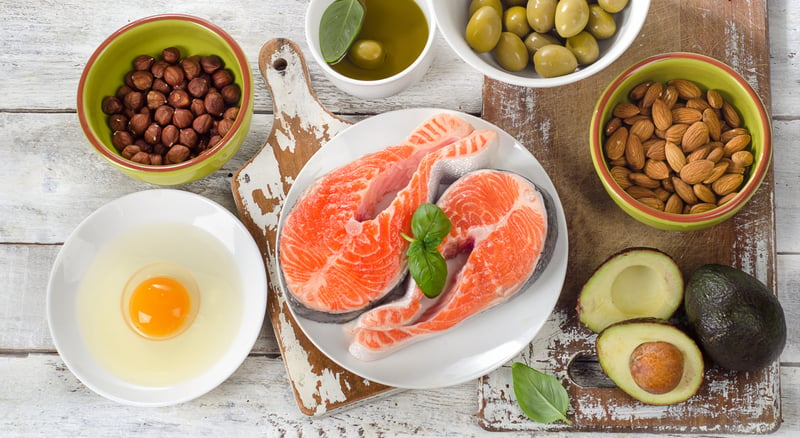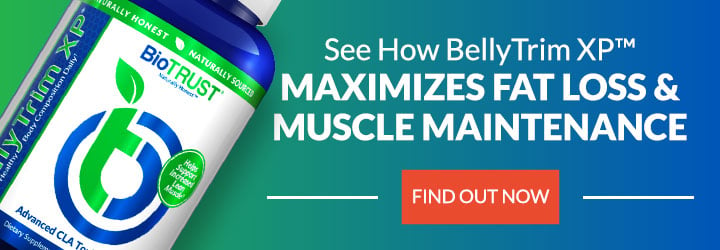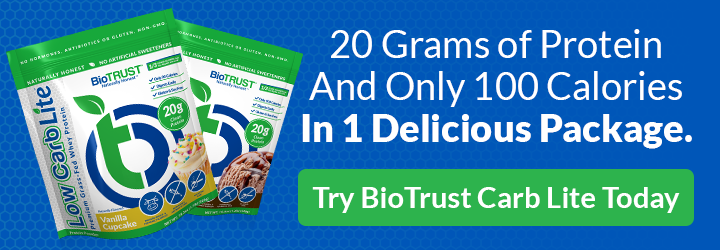3 Far-Too-Common Health Myths, Debunked by Science

You’ve probably grown up with certain beliefs about health and may have passed them on to your children or even your children’s children. But when it comes to health and diet, did you know that some of what you’ve come to believe as gospel may be more fiction than fact, with no real supporting evidence?
It’s time to debunk three of the most common health myths which are prevalent today. While they have a long history and have been claimed in numerous circles, they’re simply not true.
Health Myth #1: Eating Fat Makes You Fat
Just the thought of eating fat is enough to make even the most seasoned dieters cringe in fear. There seems to be an innate terror associated with the consumption of dietary fat, and it’s a phobia that’s been passed along, especially in the last 30 to 40 years.
The demonization of fat is unfortunate as it is not only a required nutrient for optimal health, but eating fat can even help you lose excess body fat.
What?!
Yes, it’s true. While one gram of fat provides 9 calories, versus 4 calories per gram for both protein and carbohydrates, that gram of fat has plenty of benefits. One of the main benefits is squashing your hunger pangs.
You see, all calories are not created equal. The fats you consume affect not only your physique, but also your metabolism, your gut health, your immune system, your mood, your hormones, and more. Often, including the right fats in your diet will leave you feeling more satisfied with the foods you consume, so you may reduce the desire to overeat.
In addition, fat slows the rate of gastric emptying and how quickly carbs enter the bloodstream (i.e., glycemic response). What’s more, some weight-loss trials have shown that high-fat, low-carb diets tend to lead to greater weight loss than low-fat, high-carb diets.
So, are you still afraid of eating fat? Nope: health myth debunked.
Health Myth #2: Eating Lots of Protein is Unhealthy
If you’ve been following a high-protein, high-fat, and low-carb diet, chances are good you’ve had some well-meaning folks on your case with dire warnings about the risks of eating what they consider to be “too much” protein.
According to the U.S. Department of Agriculture, the “Dietary Reference Intake” or DRI for adults is 0.36 grams of protein per pound of bodyweight. That means a 150-pound person would only be eating around 55 grams of protein per day. That’s insanely low for anyone who is trying to change their body composition by losing body fat and building muscle.
What’s a better number?
Studies show a good target for healthy, active adults is around 0.7 grams of protein per pound of body weight. Even more, studies have shown “no deleterious effects” when healthy folks consume 1.5 – 2 grams of protein per pound of body weight per day over an extended period of time. Along those lines, increasing protein intake has been shown to:
- Accelerate fat loss
- Aid in the retention of muscle mass when dieting
- Help you feel full and satisfied
- Keep your metabolism strong
- Help you maintain your weight loss after long-term dieting
Some folks will also tell you that “too much” protein can damage the kidneys, which are responsible for flushing out waste. However, according to renowned protein researcher Stu Phillips, this is a “circular argument” that stems from the fact that folks with poor renal health are frequently counseled to reduce their protein intake. However, in otherwise healthy individuals, the current body of scientific evidence does not support the notion that a high-protein intake negatively affects the kidneys.
Additionally, the University of Connecticut published a study called “Dietary Protein Intake and Renal Function,” which showed no negative impact on kidney function for healthy adults like athletes and people using high-protein diets to lose weight. Having said that, there may be some anti-aging benefits to lowering protein intake every once in a while, whether that’s cycling protein intake or incorporating some form of intermittent fasting.
Eating moderate amounts of protein and taking in enough fluids each day will help you burn fat and stay healthy. For otherwise healthy individuals, a high-protein diet does not appear to be unhealthy: health myth debunked.
Health Myth #3: Longer Workouts are Better
So, you’ve been trying to lose weight, and you’ve been dieting for a while. Now you’re ready to add in exercise, but you’ve been avoiding it because the notion of spending endless hours in a gym has you mentally cringing.
Well, here’s finally some good news… longer workouts are not necessarily better! In fact, you could potentially do several short workouts throughout the day and get just as much of a benefit as if you’d done one long workout. Yes, all those little things you do throughout the day add up in a good way to improve your health and help you burn off extra body fat.
You can also partake in high-intensity interval training, also called HIIT, which will both save you loads of time and kick your proverbial butt when it comes to a cardio and fat-burning workout. One popular example of HIIT is Tabata, which involves alternating 20-second bursts of all-out work followed by a brief 10-second rest period and repeated 8 times.
Traditionally, exercise authorities such as the American College of Sports Medicine (ACSM) have recommended that healthy adults engage in moderate-intensity cardio for at least 30 minutes a day, 5 days a week for a total of at least 150 minutes each week. However, based on the latest science, even the conservative ACSM has modified its position stand to reflect that you can get just as much bang for your buck doing 20 minutes of vigorous-intensity exercise at least 3 days per week. And multiple studies have shown that you can get just as much—if not more—benefit from HIIT-style exercise in as little as 20% of the time compared to traditional cardio (i.e., 30 minutes versus 150 minutes, respectively, per week).
Besides, dragging yourself to the gym for unending cardio and workouts can be taxing on your muscles, joints, and ligaments. And, you’re more likely to get injured when you’re exhausted and overworked. Plus, keeping things short and sweet means it will be a whole lot more fun to get your workout in in the first place.
So, more is not always better when it comes to fitness and fat burning. Exercise is great (and necessary) for wonderful health, but when it comes to calorie burning and weight loss, you’re better off keeping a closer eye on your diet than grinding it out for hours at the gym: health myth debunked.







